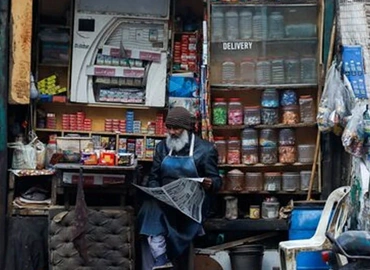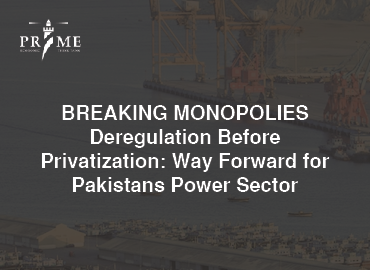Introduction
Pakistan's population is expected to reach 230 million, from today's 208 million, by 2030. The share of urban population will increase from 36% (2017) to 46.6%, with about 17 cities having populations of more than one million. (Business Recorder, 2016) If Pakistan manages its urbanization properly, it will have greater economic opportunities and higher economic growth for sustainable development and better living condition of its people. Urbanization has the potential to drive productivity with cities as engines of growth. Cities create opportunities and play a key role in creating jobs, enhancing market competition and improving livability.
Economic expansion has a peculiar relationship with growing urbanization. Developed economies are overwhelmingly urbanized, whereas urban population are burgeoning in most of the emerging economies with rising economic footprint. This ensuing trend is evident from the economic and population statistics of the 25 largest economies, as tabulated in Table A in the annexure. In developed economies, urbanization is ranging from 70% to 94%. Even on an average, 57.2% of population in largest 25-economies resides in urban centers. Pakistan urban ratio is 18% lower than this global ratio.
Growth opportunities for business sectors are effectively dependent on the quality of economic governance in major cities of the country. It is becoming an established fact that large cities drive economic growth of the countries. They concentrate resources and skill set that provides the requisite scale to undertake large industrial and service ventures. In actual, economic competition has become more between global metropolitan cities than their countries of origin. New York, London, Paris, Shanghai, Sao Paulo, Johannesburg, Mumbai, Istanbul, Bangkok, Kuala Lumpur and others are vying for global capital and inward investments for sustaining their competitiveness and quality of living.
Bulk of the year 2016 global trade of $15.6 trillion and FDI flow of $2.3 trillion originates and resides in major urban centers of the world. Location remains the game in the town for attracting funds and talents. Large urban agglomerations offers scale and competitiveness to businesses for economic expansion. Take the case in point of China. A country, which was able to pull over 400 million of its citizens out of poverty in a single generation, an unprecedented feat in human history. Its economic ascendency and rapid urbanization has a peculiar relationship. In early eighties, its urbanization ratio was lower than Pakistan. As per latest figures, its urbanization ratio is 18 points ahead of Pakistan and its economy 22-fold larger than Pakistan.
Idea for this Metropolitan Competitiveness Index (MCI) emerged from the realization of importance of metropolitan regions in being the pivot for economic concentration and innovation. Pakistan is not a small country, it is sixth most populous country, but the 25th largest economy. The country has enormous untapped and unrealized economic potential. With a relatively young history, the country has been witnessed to various political and economic upheavals over the span of decades.
Pakistan is a federation, where the large major constitutional exercise for devolution took place in 2010, under the grab of 18th amendment. It devolved powers from federal government to four provincial governments. However, the journey for further devolution from provinces to local governments has been impeded. On one hand, provinces have grievances against center of acting more like a unitary state rather than operating in a federation spirit. On the other hand, provinces are now operating in a unitary manner with concentration of fiscal and political powers with the provincial elite. Now the question arises about the agility of such structure in addressing civic and economic issues in an effective and efficient way.
Islamabad, Karachi, Lahore, Peshawar and Quetta all have their own municipal corporations with elected mayors in place. City specific chambers and other business associations have also been operating for long. Under the constitution, provincial governments are authorized to legislate a local government system and hold its elections accordingly. However, devolution journey in the federal state of Pakistan is still continuing. Elections for local governments have been held and elected third tier setup is in place in all provinces and federal capital, but effective fiscal and administrative devolution is evolving.
Pakistani metropolitan cities have to be benchmarked on their capacity to service business sectors in order to ascertain requisite governance reforms. This project of developing a Metropolitan Competitiveness Index is meant to precisely serve this purpose. Major metros of Pakistan are struggling to meet the demands of their dwellers for the provision of quality municipal services, adequate infrastructure for sustaining competitiveness and job creation.
On standalone basis, Punjab, the largest province of Pakistan, will be 12th most populous country of the world. As per 2017 census, 75.6 million urban population of Pakistan makes up 36.4% of the total population. Though veracity of this figure is contested by number of independent economists, but even if it is taken as reference, then as of today there are 10 cities in Pakistan with a population of million and above. Data on the most populous cities of Pakistan is tabulated in Table B in the annexure.
For the first phase of this project, five of these cities have been selected to be analyzed in this report namely Islamabad, Peshawar, Lahore, Quetta and Karachi.
Economic competitiveness and resilience of these cities will influence the standing of Pakistan on the global economic parameters. It may be reiterated here that the role of urban economies in economic ascendency of Pakistan will not be different than the contribution of urban agglomerations in the growth of other countries.
This study aims to contribute to the strategic initiatives of the “Pakistan Vision 2025” which emphasizes the increasing demand for city-wide data for knowledge communication in order to make cities the hubs of economic growth. This report is the first step to track the performance of Pakistani cities through the Metropolitan Competitiveness Index (MCI). Competitiveness of a city is defined as;





